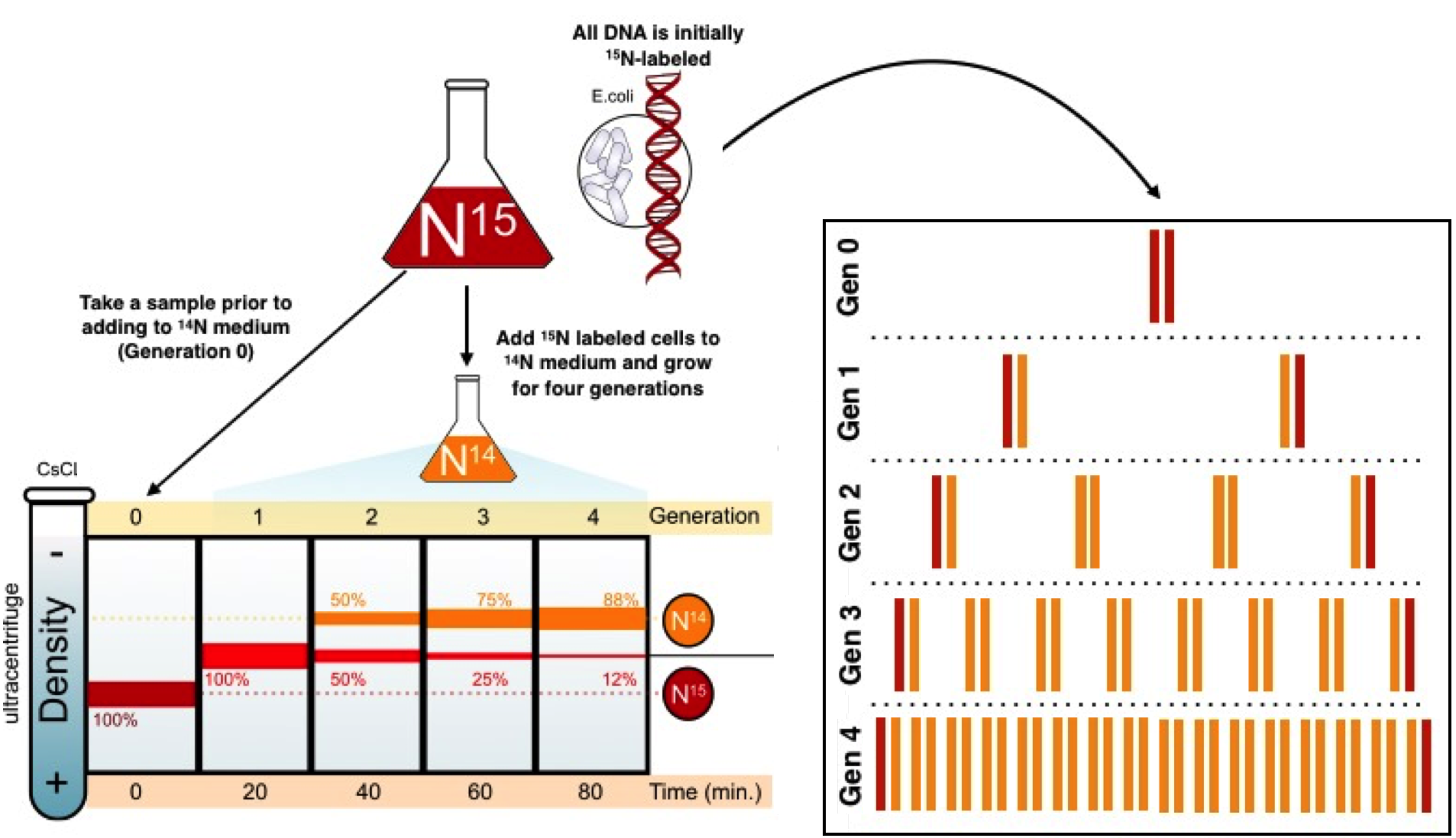Table of Contents
Introduction:
The Meselson-Stahl experiment was a landmark study in the field of molecular biology. It was conducted by Matthew Meselson and Franklin Stahl in 1958 and provided crucial evidence in support of the semi-conservative replication of DNA.
Aim:
The aim of the Meselson-Stahl experiment was to determine the mode of DNA replication and to prove the semi-conservative hypothesis.
Semi-conservative Hypothesis:
The semi-conservative hypothesis of DNA replication proposed that during replication, each strand of the parental DNA double helix serves as a template for the formation of a new complementary strand, resulting in two identical daughter DNA molecules.
Method:
- The experiment was performed on the bacterium E. coli.
- The bacterial cells were grown in a medium containing a heavy isotope of nitrogen (15N) for several generations.
- The cells were then shifted to a medium containing a lighter isotope of nitrogen (14N) for the next generation.
- The DNA from the cells was extracted and centrifuged to separate the heavy (15N) and light (14N) DNA molecules.
- The DNA was then subjected to ultracentrifugation, which separated the DNA molecules based on their density.
Results:
- The first generation of cells grown in the 15N medium showed a homogeneous band of DNA molecules that were heavy.
- The second generation of cells grown in the 14N medium showed two bands of DNA molecules, one heavy and one light.
- The third generation of cells grown in the 14N medium showed a homogeneous band of DNA molecules that were light.
Conclusion:
The results of the Meselson-Stahl experiment confirmed the semi-conservative hypothesis of DNA replication. The results showed that after replication, each daughter DNA molecule contained one heavy and one light strand. This indicated that the parental DNA strand served as a template for the formation of the complementary daughter strand.
Impact:
The Meselson-Stahl experiment was a significant contribution to the field of molecular biology and helped to establish the semi-conservative replication of DNA as a widely accepted theory. The experiment has been repeated and confirmed numerous times, and its results are still widely used in molecular biology classrooms today.
Conclusion:
The Meselson-Stahl experiment provided crucial evidence in support of the semi-conservative replication of DNA and helped to establish this theory as a widely accepted concept in molecular biology. Its results have been confirmed and repeated numerous times, and its impact can still be felt today in molecular biology classrooms and research.
